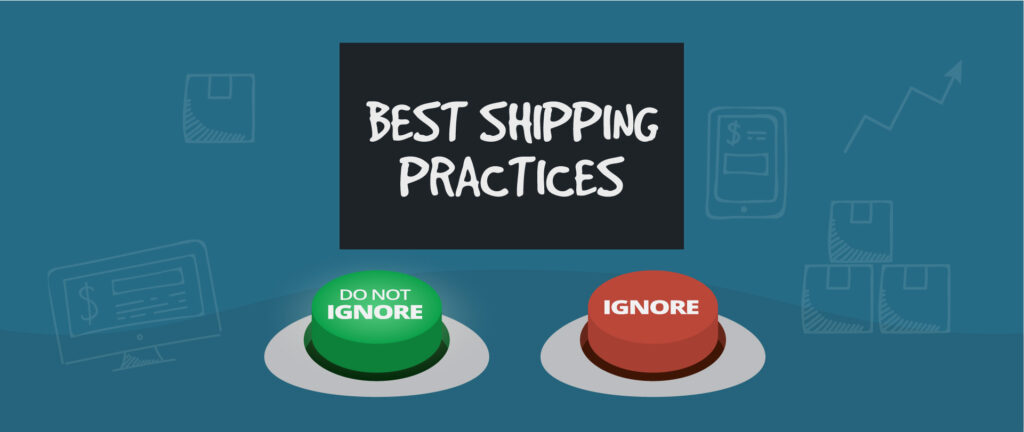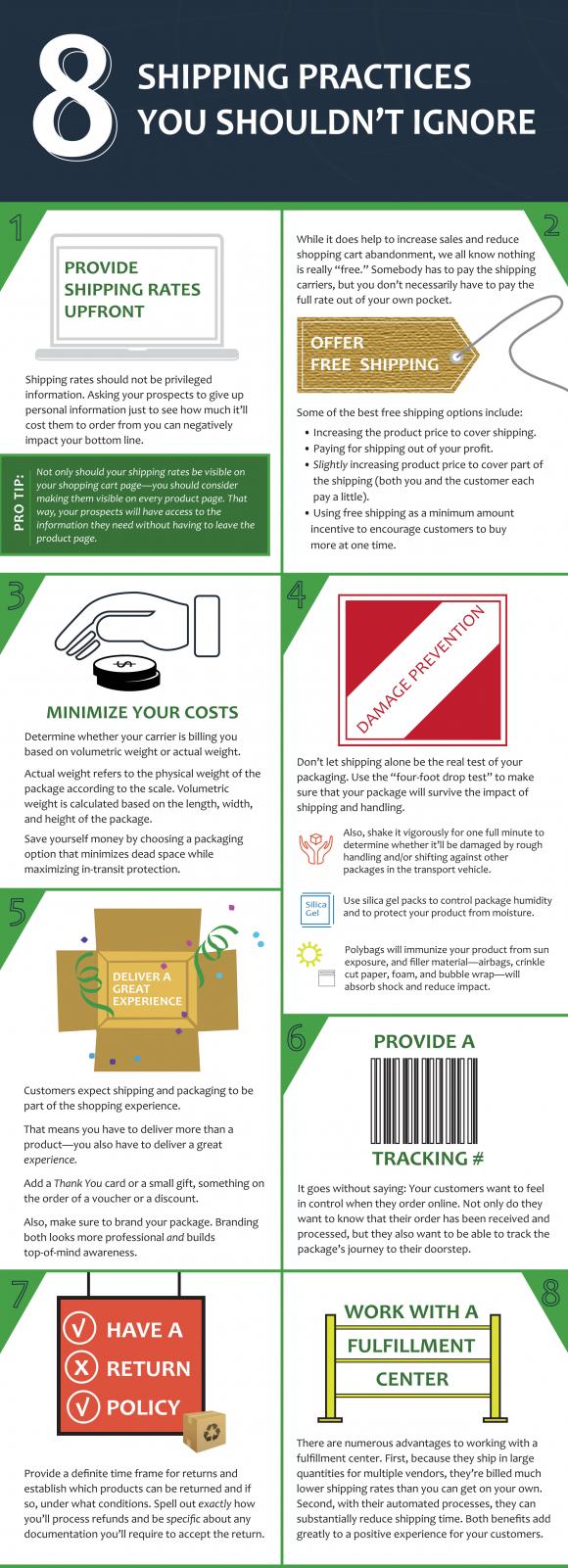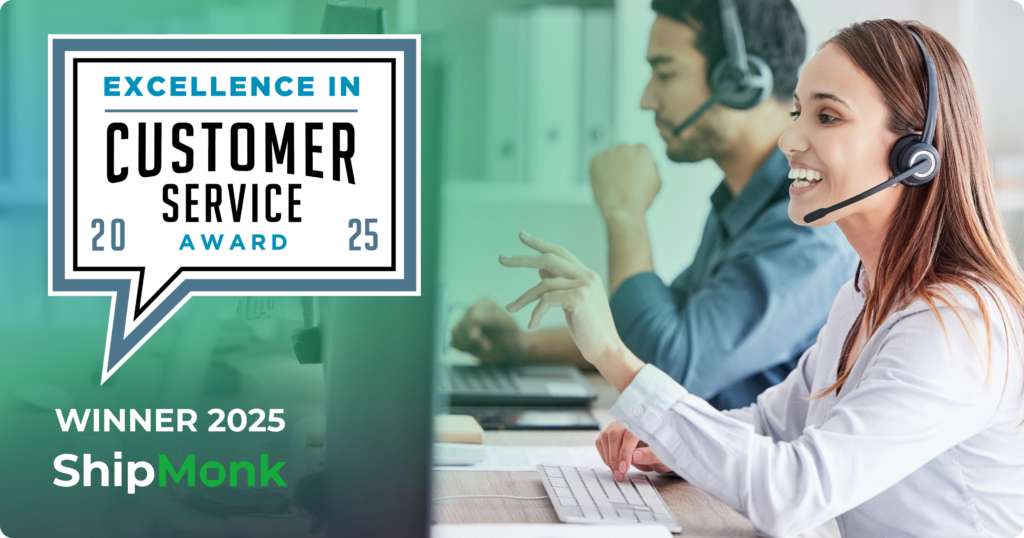You’ve worked hard to gain 99% control over your customers’ experience with your brand. You’ve developed your product, built your website, created a marketing plan, overseen customer service, and done everything else needed to succeed. However, once that product ships to your customer, you’re down to only 1% control. Yes, that’s a tiny percentage, but that one percent can make or break you.
No matter the size of the business—small and startup or large and established—shipping can make or break a company. Many sellers struggle to deliver the best experience to their customers, but ensuring that your product reaches the customer intact is only a fraction of the task. Choosing the right packaging and working with a trustworthy shipping partner are equally as important. Neglecting your shipping strategy plan will not only affect your bottom line, but it may tarnish your reputation as well.
Many new entrepreneurs either don’t give too much thought to the shipping process, or they don’t fully understand the complex ecosystem that is today’s modern shipping and fulfillment. Yes, it can be confusing, but that’s why we’re here to help.
Here are the eight best shipping practices [with infogrpahic] that you should implement as soon as you can. Why? They are proven to increase your profitability!
1. Provide Shipping Rates Upfront
How would you feel if you tried ordering something from Amazon only to discover that you have to log in before you can see their shipping rates? You wouldn’t be too happy, would you? The same goes for your prospective buyers.
Shipping rates should not be privileged information. Asking your prospects to give up personal information—name, address, sometimes even preferred payment method—just to see how much it’ll cost them to order from you can negatively impact your bottom line. Not only should your shipping rates be visible on your shopping cart page—you should consider making them visible on every product page. That way, your prospects will have access to the information they need without having to leave the product page.
2. Whenever Possible, Offer Free Shipping
Free shipping is widely used by e-commerce sellers and is considered a very effective marketing and promotional strategy. However, while it does help to increase sales and reduce shopping cart abandonment, we all know nothing is really “free.” Somebody has to pay the shipping carriers, but you don’t necessarily want to pay the full rate out of your own pocket all the time.
Some of the best free shipping options include:
- Increase the product price to cover shipping
- Pay for shipping out of your profit
- Slightly increase product price to cover part of the shipping (both you and the customer each pay a little)
- Use free shipping as a minimum amount incentive to encourage customers to buy more at one time. For instance, offer free shipping for orders over $100, or free shipping if they purchase a group of items.
3. Minimize Your Costs
A package that you consider to be “light and soft” may well take up a lot of space. This hinders carriers’ opportunity to load their shipments with other products. That’s why it’s important to determine whether your carrier is billing you based on volumetric weight or actual weight.
While actual weight refers to the physical weight of the package according to the scale, volumetric weight is calculated based on the length, width, and height of the package. Most carriers use volumetric weight to ensure that they won’t lose money on lightweight shipments.
Therefore, save yourself money by packaging your products so that they take up as little space as possible. Choose a packaging option that minimizes dead space while maximizing in-transit protection. That way, not only will you reduce your costs and ensure product integrity, but you’ll also reduce your carbon footprint.
4. Damage Prevention
Do you know the best way to guarantee that your product will arrive in one piece on your customer’s doorstep? The answer is simple: Proper Packaging!
Many e-commerce sellers think that labeling a package as “fragile,” is enough to ensure that it’ll be treated as such. Unfortunately, that’s rarely the case. Even sturdy products can be damaged by the rigorous wear and tear that’s unavoidable during the regular shipping process.
Don’t let shipping alone be the real test of your packaging. Use the “four-foot drop test” to make sure that your package will survive the impact of handling and shipping. Also, shake it vigorously for one full minute to determine whether it’ll be damaged by rough handling and/or shifting against other packages in the transport vehicle. To control package humidity and to protect your product from moisture, use silica gel packs. Polybags will immunize your product from sun exposure, and filler material—airbags, crinkle cut paper, foam, and bubble wrap—will absorb shock and reduce impact.
5. Deliver a Good Customer Experience
Not too long ago, packing and shipping were merely the way you received something you ordered. But as the world of e-commerce grows, so do the expectations of people buying online. Nowadays, more and more customers expect shipping and packaging to be part of the shopping experience.
That means that you absolutely must do more than simply ensure that the product reaches the customer safely. You now need to exceed their expectations and impress them. You have to deliver more than a product—you also have to deliver a great experience. Always add a Thank You card and/or a small gift, something on the order of a voucher or a discount. This is one proven way to provide a better experience to your customers. Also, make sure to brand your package. Branding both looks more professional and builds top-of-mind awareness.
6. Provide a Tracking Number
It goes without saying: Your customers want to feel in control when they order online. Not only do they want to know that their order has been received and processed, but they also want to be able to track the package’s journey to their doorstep.
As soon as you’ve processed an order, give your customers the tracking number and any other shipping information that enables them to track the package. This will also save you and your support team time because you won’t have customers repeatedly calling about the status of their order.
7. Have a Well-Defined Return Policy in Place
A clearly stated return policy is not only a must-have for your online store, it’s also a great strategy to keep your customers happy. Provide a definite time frame for returns and establish which products can be returned and if so, under what conditions. Spell out exactly how you’ll process refunds and be specific about any documentation you’ll require to accept the return—receipt, shipping documents, original packaging, etc.
8. Work with a Trusted Fulfillment Center
Outsourcing to a fulfillment company will help you stay competitive and efficient. Not only will they help store, organize, and ship your orders more proficiently, they’ll also provide you with easy access to viewing your current stock levels.
In addition to this, working with a good fulfillment service eliminates the risk of shipping errors. Their state of the art inventory management software, automated processes, streamlined pick and pack methods, and receiving and return procedures—all of these ensure accurate and effective order fulfillment processing.
There are numerous advantages to working with a fulfillment center. First, because they ship in large quantities for multiple vendors, they’re billed much lower shipping rates than you can get on your own. Second, with their automated processes, they can substantially reduce shipping time. Both benefits add greatly to a positive experience for your customers.
Without a doubt, shipping is one of the most challenging aspects that e-commerce entrepreneurs face, so understanding all of the factors regarding shipping and handling orders is crucial to the long-term success of your business. Make it a priority to regularly evaluate and adapt your shipping strategy to ensure that you’re delivering the best possible experience to your customers.
If you have any questions regarding your shipping strategy, or need help adopting our best shipping practices, feel free to reach out to us. Our shipping experts would love to help you streamline your logistics.






